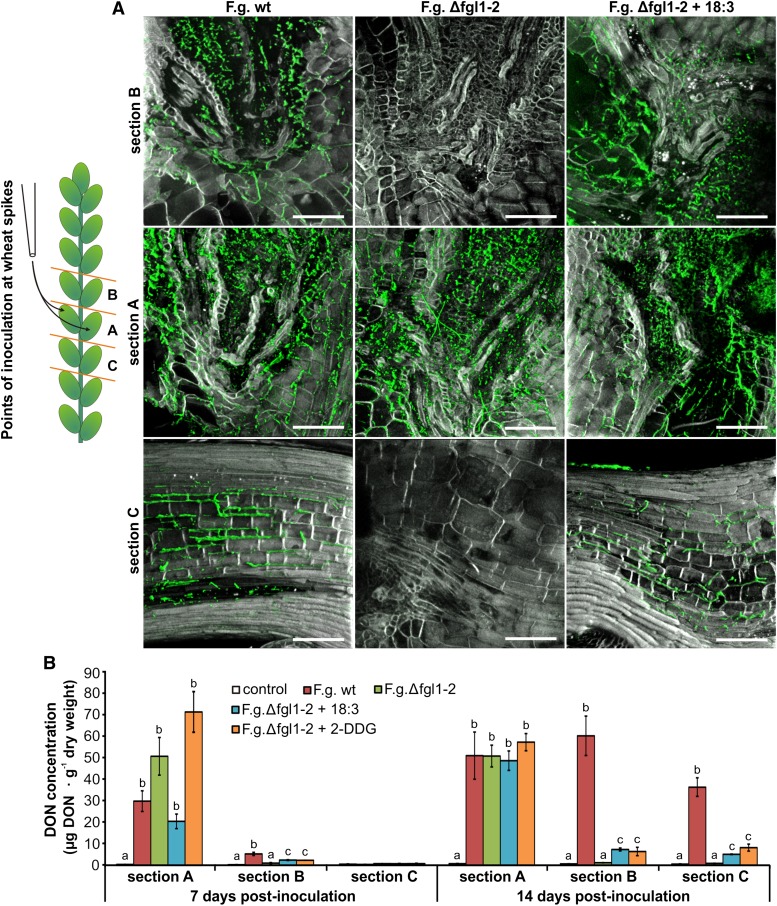Figure 3.
FFA and 2-DDG impact on the progress of F. graminearum infection and mycotoxin production in wheat spikes. A, Sections of directly inoculated spikelets comprising the transition zone of rachilla and rachis (section A), the transition zone of rachilla and rachis of spikelets above inoculated spikelets (section B), and the rachis region below inoculated spikelets (section C). Inoculation was with F. graminearum wild type (F.g. wt), lipase-deficient strain Δfgl1-2 (F.g. Δfgl1-2), and Δfgl1-2 supplemented with α-linolenic acid (F.g. Δfgl1-2 + 18:3). Supplementation was by the addition of 4 µL of ethanol-dissolved 18:3 (concentration, 3.2 mm) to each of the previously inoculated spikelets at 3 dpi. Micrographs were taken by confocal laser-scanning microscopy at 14 dpi. Green color was assigned to fungal hyphae stained with Alexa Fluor 488-conjugated wheat germ agglutinin, and grayscale was assigned to aniline blue-stained callose. Micrographs are representative for the infection progress in spikelets inoculated with F. graminearum wild type (no differences with or without the addition of FFAs or 2-DDG) and lipase-deficient strain Δfgl1-2. Changes in infection progress due to the addition of unsaturated FFAs or 2-DDG to Δfgl1-2-infected spikelets are represented by images of infection after the addition of 18:3. Bars = 200 µm. B, DON concentrations of wheat spike tissue from sections A, B, and C (compare the schematic overview in A) at 7 and 14 dpi with F. graminearum wild type, lipase-deficient strain Δfgl1-2, and Δfgl1-2 supplemented with α-linolenic acid or 2-DDG. Values represent means of two biologically independent experiments. The letters a, b, and c indicate P < 0.05 by Tukey’s test. Error bars represent se, and n = 3.

